Book Reviews by Genre: Science/Mathematics
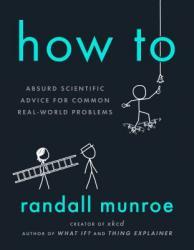
I’ve been a fan of Randall Munroe’s work for quite some time. This artist
of the xkcd webcomic certainly has a sense of humor that I appreciate, so I
looked forward to his latest book, How To: Absurd Scientific Advice for
Common Real-World Problems. While his previous book, What if? covered
hypothetical scenarios asked by the users of the internet, How To takes a
somewhat opposite approach by using extreme science to do the most basic
things imaginable. If you’re looking for simple answers, this isn’t the
book for you.
While it’s fun to think of the most complicated way to (for example) be on
time, often the joke goes on a little too long as the exact science behind
the absurdity is explained. There were times I felt I was reading a textbook
instead of a humorous treatise on how to cross a river. Even though I do
enjoy some extreme aspects of science, there is a limit to this enjoyment.
And perhaps this was because most of the science explained in this book felt
fairly rudimentary. Back of the envelope calculations can work for these
hypothetical situations, so it’s not like we needed the exact distance
George Washington could fling a silver dollar.
Despite its occasionally dry scientific explanations, the writing and
illustrations often had me laughing out loud. Many of the footnotes were
particularly hilarious. So while the content often felt like it was being
taken quite seriously, the slight tinge of humor always reminded me that the
whole exercise was to be as tongue-in-cheek as possible. If anything, this
book should give any reader a good sense of how we shouldn’t take the
simple solution for granted. After all, it’s probably much less
radioactive.
Some dry science covered in healthy layers of humor, I give How To 4.0 stars
out of 5.
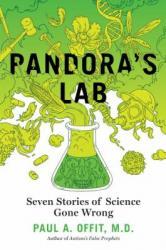
Science is an interesting realm. The public would sure like to think that all scientists are dedicated to finding the purest form of some scientific concept and modifying it to benefit society. However, some things become readily clear: not all societies are the same, and science can be abused. If anything, some of the worst scientific discoveries of the last few centuries were made with the best intentions. Unfortunately, more often than not, the full science wasn’t brought to the table, and plenty of people suffered because of it. Enter Pandora’s Lab, a selection of a few of the worst scientific discoveries and the stories behind what made them go awry.
Each of the scientific discoveries covered in this book had slightly different negative impacts on the world, but the reason why they became so notorious is almost ubiquitous. Science is no place for emotion, so finding quick fixes for something by using science can create worse problems than the ones that were initially there. Scientific rigor is also of utmost importance. Even if many of these horrific discoveries received Nobel prizes, hindsight showed skewed results from the start. Every new and fantastic technology created from scientific research should be scrutinized with a heaping of salt to ensure it can’t be abused.
On the flip side, ignoring sound scientific facts or not considering the full, worldwide implications of a discovery is just as dangerous. Ignorance is bliss, as long as the consequences don’t directly impact you. While we do have the benefit of hindsight, it’s essential to use the lessons presented in this book. We need to examine the science and technology being developed today and do our due diligence to make sure that they don’t inspire genocide or doom all of humanity to an unsustainable new way of life.
A grave lesson about the consequences of bad science, I give Pandora’s Lab 4.0 stars out of 5.
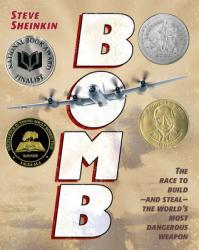
This book is perfect for young history enthusiasts, around the age of middle school. It's all about how the world's deadliest weapon was created, researched, spied on, and used. Explaining the race and allies of America to win the Cold War and beat Russia and Japan in creating the very first atomic bomb, this real-life story includes many famous scientists and new scientific discoveries. If you love action, science, and history, then I promise you'll love this book. It is super unpredictable and has a pretty sad ending when one of the countries wins. But who wins? Guess you're going to have to read to find out. Reviewer Grade: 8
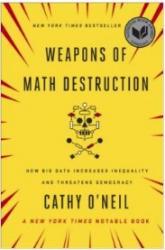
I love data. I love what it can show us as individuals and what it can show as society changes from year to year. Being able to trend my spending is just as useful to me as knowing how many people are participating in my National Novel Writing Month region. Because I’m always interested in seeing what pure numbers can show me about the world, I was intrigued to find this book, Weapons of Math Destruction. While I had already heard many of this book’s conclusions, it was interesting to read about the algorithms that work silently behind the scenes of our society and how nobody can really control or change them.
I’ll agree that it’s terrifying to have decision-making boiled down to a number popped out of an algorithm that decision-makers just blindly trust without understanding the rules of causality or correlation. People are messy, so I understand how finding a single aggregating number to represent an individual is a simple solution. However, I agree with the author’s outrage that these numbers are putting the disenfranchised into a toxic and harmful feedback loop. It’s difficult enough to survive out there without an arbitrary number determining your fate and you having little to no ability to change it. Of course, this point is pounded home about one or two times too many in this book.
From personal experience, I have received a brief glimpse behind the curtain into how these algorithms work. When I got married, I moved from one zip code to another in the same town. At that point, my car insurance premiums suddenly went up. Why? Because I was in a zip code filled with people who were “bad drivers.” Despite nothing about me or my car changing, now I was suddenly a bad driver. I do think there are some substantial reforms needed in these algorithmic systems. Still, I don’t necessarily think the solutions provided by the author are the right answer (they seem mostly based on the author’s personal opinions and biases).
A repetitive look into the dangers of blindly trusting algorithms, I give Weapons of Math Destruction 3.5 stars out of 5.
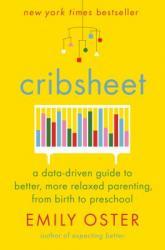
As a new parent and an engineer, I am skeptical when so much advice about raising a baby comes from hearsay or anecdotal evidence. So many controversial topics abound in the early years of a child’s life that I wanted to make sure I was basing my decisions off the scientific data instead of mere wives' tales. Fortunately, Cribsheet: A Data-Driven Guide to Better, More Relaxed Parenting, from Birth to Preschool exists. Unfortunately, it has merely proven to me that there haven’t been enough rigorous studies to show any causal relationships to make my parenting decisions any easier.
Similar in the tactics of Zero to Five (whose author was a science journalist), Cribsheet takes the experience of an economist and pits it against the studies that have been performed to determine which of them are legitimate enough to be trusted. In most cases, it seems that plenty of research into the benefits and detriments for children (and parents) merely comes down to broad Gaussian distributions. That is, there are no correlations between two drastically different approaches on the outcome of the child’s health or future behavior. This is undoubtedly a relief to know, if for no other reason than to give me free rein to parent as I see fit (with my wife's input, of course).
One mantra that Cribsheet seems to reiterate is that—even if data supports a beneficial outcome—if the parents’ mental health issues and/or anxiety increase because their lifestyle cannot support it is not worth the small percentage points of benefit to the child. Basically, the studies that do support something like breastfeeding show that these desired outcomes are in the short term and won’t harm the child if this particular parenting method isn’t chosen. While the data absolutely supports one or two items of interest, everything else is so loosely researched as to prove nothing in one way or another.
A great book about statistical rigor in childhood studies, I give Cribsheet 4.0 stars out of 5.
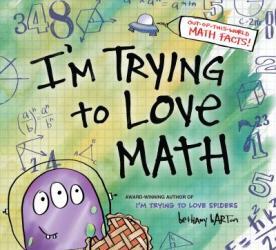
Using abundant humor, Bethany Barton makes this book about math interesting to all. Her facts and explanations show how math is used in our everyday lives and why it’s important. Math is used all around the world and even in space. We used math when we bake cookies, make music, and explore. It’s part of many of the patterns we see in nature. Since math is part of so many of the things you already love, you may just already love math.

There’s nothing magical about these experiments – just everyday science. Experiment with raisins, sugar cubes, eggs, and more. You can just use simple materials that you already have around the house to test things out and learn something too.
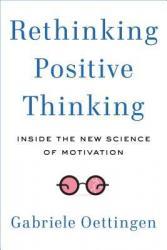
In her book, Ms Oettingen teaches readers how to use the science of positive thinking to their advantage. After years of research, she has found that mere "positive thought" does not produce optimal results for people's lives. Instead, a specifically targeted approach to positive thought and positive action is best. This is what she teaches readers. I would recommend this book to people seeking to improve their lives through targeted approaches of thought and action. Readers 16 and up are appropriate.
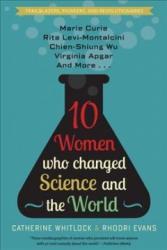
In her book, "10 Women Who Changed Science and the World", Catherine Whitlock authors the biography of ten women who were deeply influential in science. For each woman, she writes a biography of their life and what significant contribution they made to their field. This book is well-written and informative, and neither too long nor too short for each woman's biography. I would recommend this book for readers of ages 13 and up. This book should interest those interested in women's contributions to science.
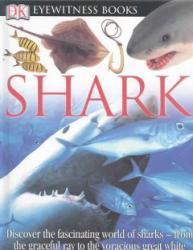
In her book about sharks, Ms Macquitty teachers readers all about the fascinating salt-water creatures. The book is well done for young ages, with plenty of interesting facts. There are also many pictures to illustrate her points. Well researched and informative, this book is sure to engage young readers.
I would recommend this book to any young readers from 5 through Elementary school. Any children fascinated with sharks and wishing to learn more will be pleased by this read.
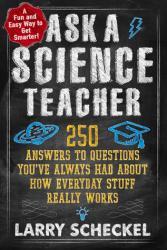
In his book "Ask a Science Teacher", Larry Scheckel lists 250 science questions and answers them all in detail for readers. Each series of questions is divided under sections. For example, there is a section about Sound and Music and a section about Chemistry. He spans a broad range of scientific topics, from biology in the question "How many cells are in the body?" to history of science in question "Did Issac Newton develop calculus?" Mr. Scheckel answers the questions thoroughly with interesting detail. He engages readers. I would recommend this book to anyone with science interests and questions. This book is appropriate for ages high school and up.
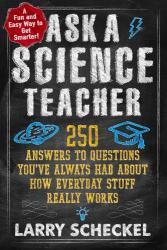
In his book "Ask a Science Teacher", Larry Scheckel lists 250 science questions and answers them all in detail for readers. Each series of questions is divided under sections. For example, there is a section about Sound and Music and a section about Chemistry. He spans a broad range of scientific topics, from biology in the question "How many cells are in the body?" to history of science in question "Did Issac Newton develop calculus?" Mr. Scheckel answers the questions thoroughly with interesting detail. He engages readers.
I would recommend this book to anyone with science interests and questions. This book is appropriate for ages high school and up.
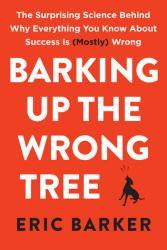
In his book Barking Up the Wrong Tree, Eric Barker explains secrets to success in many areas of life. Using the latest in scientific research, he explains how to "find work-life balance using the strategy of Genghis Khan, the errors of Albert Einstein, and a little lesson from Spider-Man", how to lower stress and increase self love, and move through life more happily
Among other lessons, Mr. Barker teachers readers why most of what they previously believed about success is "wrong". Then he goes on to explain how they can improve themselves and their lives through lessons provided by unlikely - but entertaining - sources.
I would recommend this book to anyone looking to improve success in their lives. It is an excellent, helpful, and humorous read that will be good for any age range 16 and above.
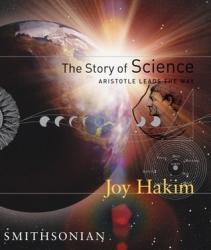
In her three book series, the Story of Science, author Joy Hakim introduces readers to the fundamental concepts within science and its history. Through creative narration, Mrs. Hakim captivates readers and makes learning interesting. By introducing the basic concepts of science through the eyes of a number of famous scientists, she helps learners to comprehend the scientific concepts while also enjoying the experience of reading.
Mrs. Hakim is a wonderful author. Her books convey a good knowledge of the subject with creativity in presentation. I would recommend this book to readers ready to learn an overview of science and its history.
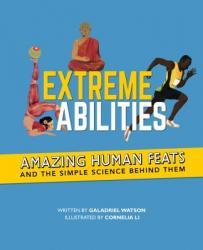
Read this book to learn about the science behind a variety of amazing feats! Do you want to learn about super strength? What about speed demons? These abilities and many more, and showcased and explained in this book. You’ll be astounded and learn something too. You can also test your abilities on some of these feats.

Check out the amazing experiments in Experiments with Movement by Anna Claybourne. You’ll learn to use everyday materials to make things fly and zoom! You’ll learn the basics of how things move, the basics of vehicle transportation. You’ll also be environmentally friendly as you reuse and recycle materials. Will you make a balloon-powered car, an air-powered rocket, or maybe an air blaster? Check out this book and get started!
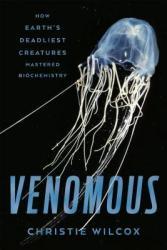
Explore the effects of many venoms and venomous animals from across the world and their interactions with humans from the stunningly potent bullet ant to the awesomely efficient komodo dragon in this nonfiction exploration of various creatures' venoms. The author does a commendable job of portraying dangerously venomous animals in ways to give them well earned respect andf fear, rather than just fear mongering. The book follows some of the author's experiences and the experiences of others to accurately show how the animals behave and how their venoms act in a personable method. The author also describes how the different venoms work in a scientific approach with her personal experiences with stings, providing multiple perspectives on the effects of certain venoms. Overall, I enjoyed how the author provided multiple perspectives of different animals and how she showed how dangerous some animals are while instilling respect for said animals. I would recommend this to anyone who has attended college level biology courses who want to study the venoms of certain animals due to the use of more advanced terminology.
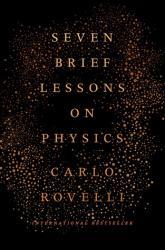
This book is an informative and very useful guide to several aspects of physics, ranging from relativity to the various theories surrounding the very fabric of our universe. Anyone reading this should, however, have some background information to basic physics as this book covers some basics surrounding more complex concepts of physics such as quanta and time. The author simplifies the concepts down and organizes them into seven lessons that become progressively more complex or confusing so I would suggest any potential readers to not skip around the book. I rather enjoy the progression of the book and how the author made the complex theories understandable to the average person who is interested in the more confusing concepts of physics. I would recomend this to anyone who wants to understand more about physics and get an small taste of the most complex ideas of physics.
Reviewer's Grade: 11
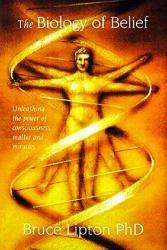
In this book about the effect of thoughts and belief on the body's cells, Dr. Lipton compellingly shows the science of positivity. A fascinating and encouraging read for teens and above, this book encourages positive thinking for all. The case Dr. Lipton makes, backed by his own research, is "the more we put happiness into our thoughts, the more happiness our bodies experience", meaning release of positive chemicals, less stress, and better healing. This is an important book that encourages positive thinkers and those working to change their thinking. This is because as Mr. Lipton says, positivity heals.

Learn about sorting as you read this book. You’ll learn simple ways to sort of pile of things and how to further sort a group. You’ll get some sorting practice and see some sorted groups. You’ll learn about different sets and what they might include. This book is a fun introduction to sorting a variety of things.
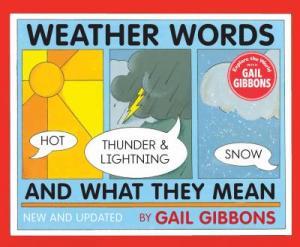
Gail Gibbons has another winning book with her updated Weather Words and What They Mean. She uses simple language to explain weather terminology and meteorology. You can learn about temperature, air pressure, moisture, and wind. Our weather is always changing. Learn about what causes the changes and how they might affect us. Also, learn some interesting weather facts. Remember to heed storm warnings and be careful in serious weather.
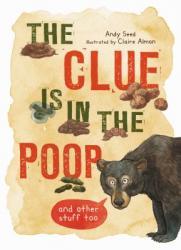
Using the clues they've left behind, you can learn to track and identify animals and this book will help. It will introduce you animal tracking through observing what's left behind whether it is poop, tracks, or more. You'll learn about what animals eat (and therefore, what you might find in their poop). You'll learn fascinating facts about a variety of animals and start on your way to become a wildlife detective.
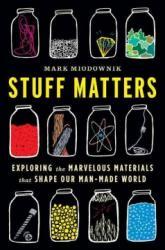
Stuff Matters is a nonfiction book on material science. The author explains everything about 6 different materials that make up our world. He goes through the history, how its made, and what is made from it. The author explains in a way that makes it a very interesting read. I found this book because I thought that the cover looked very interesting, and I it was also recommended to me by my friend. This is a great book to read if you are interested in the world around you. I would recommend it for ages 12-14.
Reviewers Grade: 9
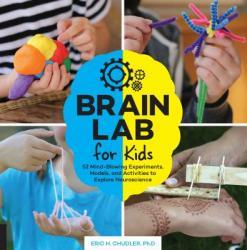
Are you interested in neuroscience? Try these 52 experiments and activities to explore neuroscience. You might explore your reflexes, vision, hearing, or sleep and body rhythms. You might learn about memory. Have some fun and learn about yourself as you read this book.
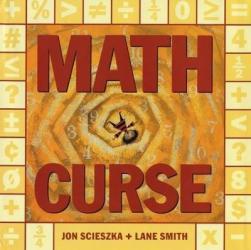
Some days you might feel that you are under a math curse where everything has become a math problem. This is the story of a girl whose life is just like that. Everything – even things that shouldn’t be math – now involve math! Work along with her to solve the problems and therefore, solve the math curse. Read and see if she succeeds.
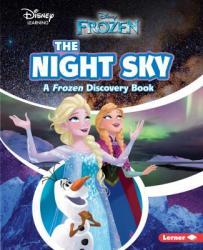
Learn about the night sky with your friends Anna, Elsa, and Olaf from Disney’s Frozen. Each topic is explored and connected to part of the Frozen story. You can learn about Northern Lights, Seasons, Stars, the planets, Eclipses, and more. If you are a fan of Frozen, this book is a great resource to learn more the science of our night sky.

Are you curious about water and its properties? This book can help. You’ll learn about the different states that water can occupy – solid, liquid, and gas. You’ll learn water facts and about rainbows. A great starter book!

Using simple text and colorful illustrations, All the Water in the World explains the water cycle and encourages us to live green.
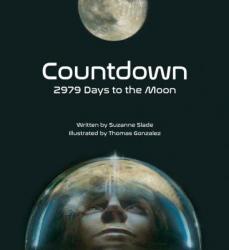
In the book, Countdown: 2979 Days to the Moon, Suzanne Slade and Thomas Gonzalez have created a gorgeous non-fiction book about Project Apollo and all the people who made the moon landing possible. Lush illustrations combine with informative free verse in this book for children age 10 - 14. There are photos, a selected bibliography, and website list in the back of the book.
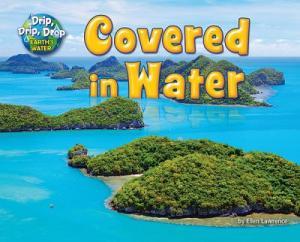
If you’re looking for a good introduction to the study of water, this may
be the book for you. You’ll learn about the water on earth – salt &
fresh. You’ll learn where our water comes from and why it’s limited, how
rivers are formed, and frozen water. You’ll also learn about the water
cycle. Try the experiment at the end of the book and resolve to use water
wisely.